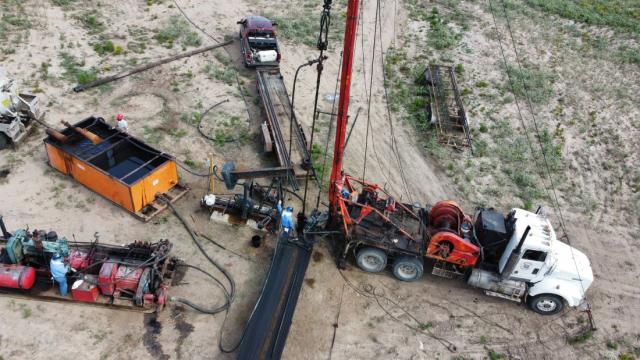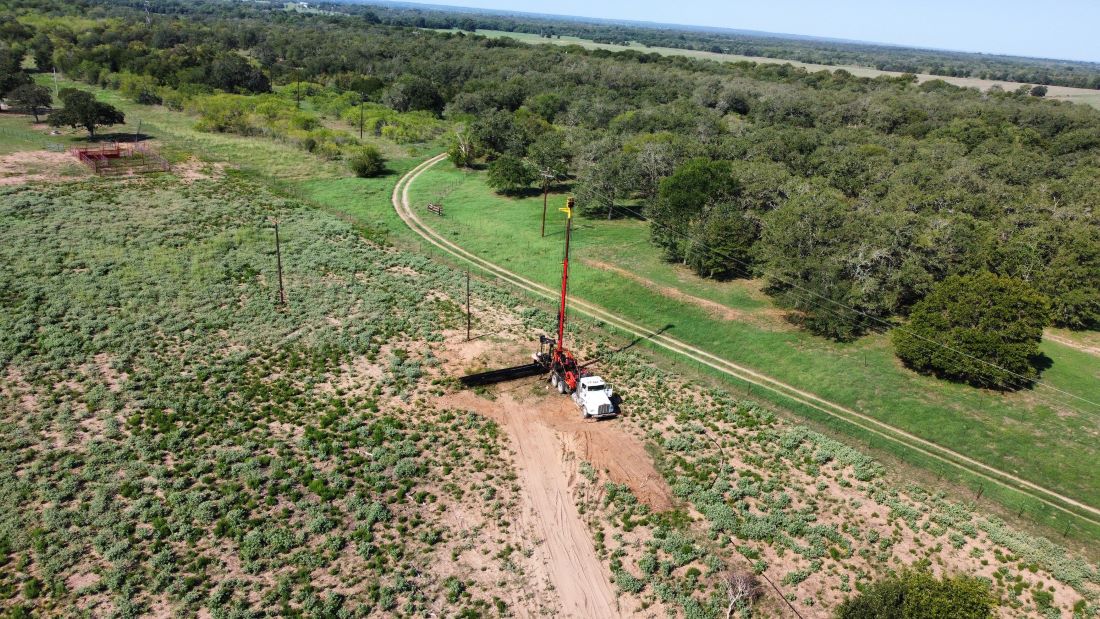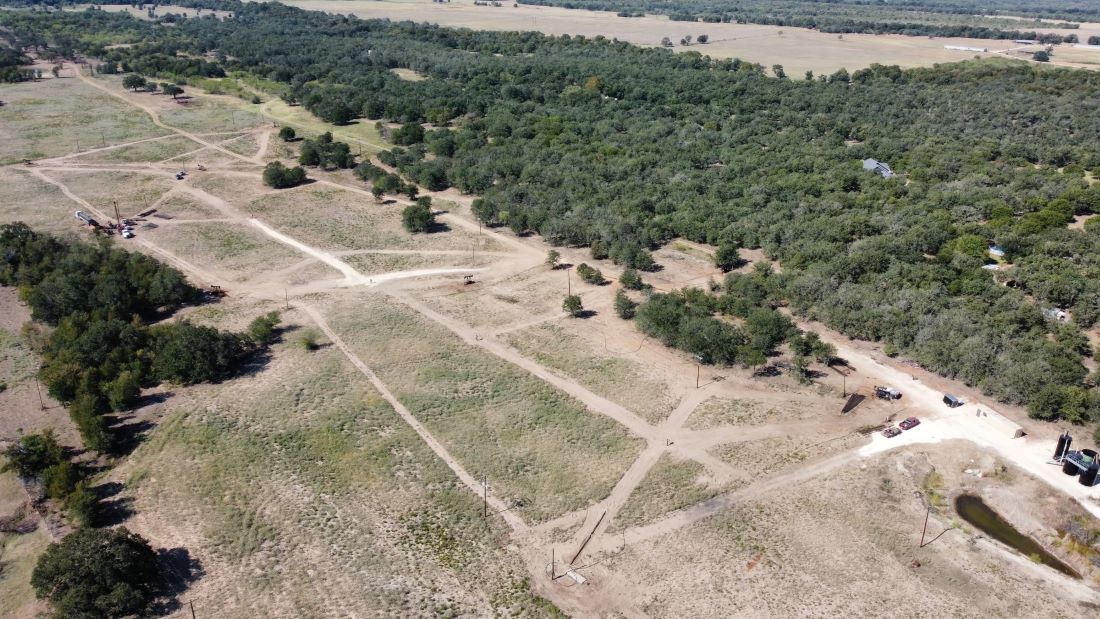
To test their Petroleum Sludge Improver (PSI), which is designed to thin out thick oil, Valynt crews started by cleaning the abandoned shale wells they purchased. Then they added the PSI solution to water and injected the mixture into a shale well, using the “huff and puff” method. PSI thins the oil to help release it from tight formations. (Source: Valynt)
From its 2017 inception, oilfield service company Valynt’s purpose was to “develop oil and gas technologies for the Middle East,” said company CEO Charles Smith, and to take on projects outside the norm.
One significant product for their target region was designed to extract lighter crudes from the heavy sludge that is common to that region’s production, to make it easier to transport and sell. Called simply Petroleum Sludge Improver (PSI), Valynt teams pumped it into sludge storage ponds, then harvested the lighter crude off the top. This success gave Smith and his team an inkling of could be accomplished downhole in stateside fields.
They just needed an efficient way to field test it – which is where the “outside the norm” thinking created a unique opportunity. Rather than negotiate with a producer for permission to do a limited test under the other party’s parameters, Valynt bought their own acreage. An abandoned shale field near Austin provided them eight wells to optimize the test to get the best information.

“We wanted to take a look at what that did if we sent it downhole during a water flooding exercise,” Smith said. “The best way to do that—to monitor it, the best way to have full control over everything—for us, was to do it in our own fields. So Valynt went out and found what we considered a good opportunity to turn a primary production oil field into a proving ground for a secondary recovery operation, using our technology in that process.”
This way, Valynt could “show what we can do in our own operation. It’s pretty special from that perspective. It’s a real-world lab, we have real-world analysis as it’s happening, real-time. It all came together in a real harmonious way,” Smith added.
How did they get there?
For all its freedom of expression in testing, the idea of resuscitating and performing EOR (the oilfield version of artificial resuscitation) in a retired field was daunting. It required replacing the infrastructure and almost all equipment, along with other unexpected obstacles.
When asked if there were times during that process that Valynt’s people wondered what they’d gotten themselves into, Smith affirmed, “every day.” But they stuck with it. Updating took about seven months before they were ready to test PSI in the ground, Smith said.
Testing process, early results
Conventional waterflooding in shale is not possible due to the tight formation’s inability to communicate fluid between wells. So Valynt used a procedure called “Huff n Puff.” In that scenario, the producer pressures up each well separately, usually with natural gas or a mixture of gas and water, then seals it up for about 30 days. After that they resume production, usually at higher rates than before.
For this test, Valynt pressured up with water containing the PSI chemicals. The hope was that it would thin the trapped oil, as it had done with the Middle Eastern sludge, releasing that oil to flow into the wellbore.
After about three months of testing, Smith reports the field has boosted flow on two levels. Cleaning the wells and replacing all the parts, infrastructure and equipment was the first step. The Huff n Puff injection with PSI added was the second.

Overall, they’ve seen production increase 1,000% over its previous numbers from three years ago, prior to shutdown. About 400 of those percentage points are due to the PSI process. Oil production is up by about 2.5 times the previous amount, with water accounting for the rest of the increase.
Boosting overall flow by four times versus oil flow by 2.5 times is largely a result of using water as the pressuring agent to carry the PSI chemical. Still, the increase in oil is significant, Smith said.
Double profit options
Since this is essentially a demonstrator for their treatment and system, Smith sees potential return on investment in two directions. First, the oil they produce from the field should pay back the investment. And likely the larger payback would come from creating producer interest in their EOR method for shale wells. Many experts say that shale wells only produce about 5%-6% of total reserves, so Smith sees plenty of room for PSI to increase production.
He added that Valynt installed extensive automation and monitoring hardware and software, allowing them to operate the field efficiently and with minimal staffing. The latter issue was necessary not only to reduce costs, Smith said, but to compensate for the reality of post-COVID-19 worker shortages.
Tight shales have been considered immune to EOR in the past. But as the best new prospects have pretty much been drilled, and most new wells underperform their older siblings, maintaining or expanding production may rest on developing secondary recovery techniques for all formations. As those realities grow on the industry, tests on Huff n Puff and other shale EORs are increasing in number and scope.
Recommended Reading
Offshore Guyana: ‘The Place to Spend Money’
2024-07-09 - Exxon Mobil, Hess and CNOOC are prepared to pump as much as $105 billion into the vast potential of the Stabroek Block.
Endeavor Energy Founder Autry Stephens Dies at 86
2024-08-16 - Stephens created a legacy in the Permian Basin that Endeavor said will continue to shape the future of the company.
Superior Sees Executive Leadership Changes
2024-08-15 - Superior Energy Services’ president, CEO and chairman Brian Moore is retiring, and his roles are to be split between the two people succeeding him.
CEO: Baker Hughes Lands $3.5B in New Contracts in ‘Age of Gas’
2024-07-26 - Baker Hughes revised down its global upstream spending outlook for the year due to “North American softness” with oil activity recovery in second half unlikely to materialize, President and CEO Lorenzo Simonelli said.
Dividends Declared in the Week of July 22
2024-07-25 - Second quarter earnings are underway, and companies are declaring dividends.
Comments
Add new comment
This conversation is moderated according to Hart Energy community rules. Please read the rules before joining the discussion. If you’re experiencing any technical problems, please contact our customer care team.





